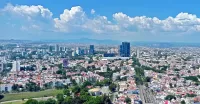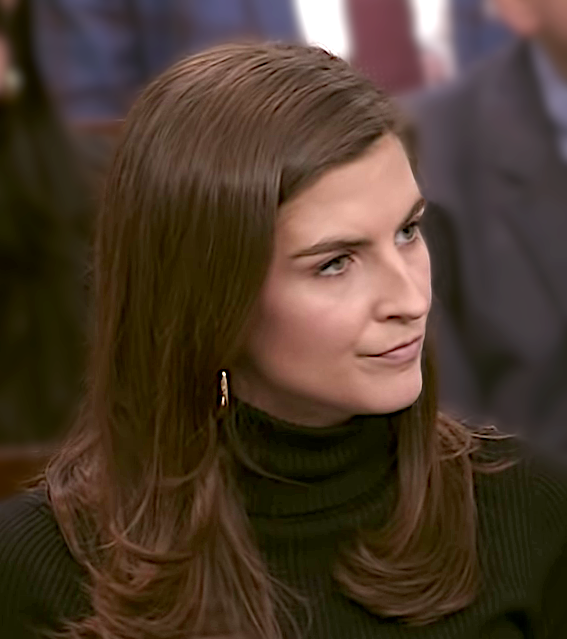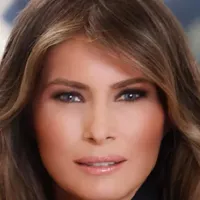The Copa Libertadores is an annual South American club football competition organized by CONMEBOL since 1960. It represents the highest level of club football in South America. The tournament's name honors the Libertadores, the leaders of the Spanish American wars of independence and Brazilian Independence.
1948: South American Championship of Champions Held
In 1948, the South American Championship of Champions, a precursor to the Copa Libertadores, was held in Santiago, Chile, organized by Colo-Colo, and won by Vasco da Gama of Brazil.
1948: Exclusion of the 1948 South American Championship of Champions
The data excludes the 1948 South American Championship of Champions, not listed by Conmebol as an official competition or Copa Libertadores edition.
1955: Inspiration for the European Cup
In 1955, the creation of the European Cup was influenced by the 1948 South American Championship of Champions, according to Jacques Ferran.
October 8, 1958: Announcement of Copa de Campeones de America
On October 8, 1958, João Havelange announced the creation of Copa de Campeones de America, later renamed Copa Libertadores, at a UEFA meeting, as a South American equivalent of the European Cup.
March 5, 1959: Competition Ratified at South American Congress
On March 5, 1959, the Copa de Campeones de America was ratified by the International Affairs Committee at the 24th South American Congress in Buenos Aires.
1960: Competition Format Details
From 1960 to 1987 the previous winners did not enter the competition until the semifinal stage.
1960: Initial Tie-Breaking Rules
From 1960 to 1987, Copa Libertadores ties were decided on points, with a third match at a neutral venue if needed, and penalty shootouts only if the third match was drawn.
1960: Intercontinental Cup Participation
From 1960 to 2004, the Copa Libertadores winner participated in the Intercontinental Cup.
1960: Inaugural Copa Libertadores Organized
In 1960, CONMEBOL organized the first Copa Libertadores de América, an annual continental club football competition, marking the beginning of the highest level of club football competition in South America.
1965: Competition Renamed Copa Libertadores
In 1965, the Copa de Campeones de America was renamed Copa Libertadores in honor of South American liberation heroes like Simón Bolívar and José de San Martín.
1966: Runners-Up Invited to Compete
In 1966, the Copa Libertadores expanded its format to include the runners-up from South American leagues, increasing competition and representation.
1972: Universitario Reaches First Final
In 1972, Universitario of Lima, Peru became the first club from a country with a Pacific coast to reach the Copa Libertadores final, where they lost against Independiente of Argentina.
1974: Peru uses 'Liguilla Pre-Libertadores de América'
In 1974, Peru used the "Liguilla Pre-Libertadores de América" from 1974 to 2009 to decide qualification for the Copa Libertadores
1975: Union Española Loses Final
In 1975, Unión Española became the third Pacific team to reach the final, although they also lost to Independiente.
1979: Olimpia Breaks the Atlantic Coast Dominance
In 1979, Olimpia of Paraguay became the first team from a nation without an Atlantic coast to win the Copa Libertadores.
1980: Toyota Cup Participation
From 1980, the Copa Libertadores winner participated in the Toyota Cup.
1987: Competition Format Details
From 1960 to 1987 the previous winners did not enter the competition until the semifinal stage.
1987: End of Initial Tie-Breaking Rules
From 1960 to 1987, Copa Libertadores ties were decided on points, with a third match at a neutral venue if needed, and penalty shootouts only if the third match was drawn.
1988: Introduction of Goal Difference and Penalty Shootouts
From 1988 onwards, Copa Libertadores ties were decided on points, followed by goal difference, and an immediate penalty shootout if the tie was level after the second leg.
1989: Atletico Nacional Wins the Cup
In 1989, Atletico Nacional of Medellín, Colombia, secured victory in the Copa Libertadores, becoming the first nation with a Pacific coastline to win the tournament.
1991: Colo-Colo Wins the Cup
In 1991, Colo-Colo of Chile won the Copa Libertadores, marking a significant triumph for a team from a nation with a Pacific coastline.
1992: Peru uses 'Liguilla Pre-Libertadores'
In 1992, Peru used the "Liguilla Pre-Libertadores" between 1992 and 1997 to decide qualification for the Copa Libertadores
1995: "Three Points for a Win" System Adopted
From 1995 onwards, CONMEBOL adopted the "Three points for a win" system in the Copa Libertadores, aligning with FIFA standards.
1996: Conmebol Entitled Equal Status to Both Competitions
In 1996/1997, Conmebol gave equal status to both Copa Libertadores and the 1948 tournament, which allowed CR Vasco da Gama to participate in Supercopa Libertadores
1997: Conmebol Entitled Equal Status to Both Competitions
In 1996/1997, Conmebol gave equal status to both Copa Libertadores and the 1948 tournament, which allowed CR Vasco da Gama to participate in Supercopa Libertadores
1997: Peru uses 'Liguilla Pre-Libertadores'
In 1997, Peru used the "Liguilla Pre-Libertadores" between 1992 and 1997 to decide qualification for the Copa Libertadores
1997: Toyota Becomes Main Sponsor
In 1997, Toyota became the first major sponsor for naming rights of the Copa Libertadores, signing a ten-year contract with CONMEBOL.
1998: Mexican Teams Invited
In 1998, Mexican teams were invited to compete in the Copa Libertadores, adding a new dimension to the tournament.
1998: Vasco da Gama's Investment
In 1998, Vasco da Gama invested $10 million to secure victory in the Copa Libertadores, highlighting the financial commitment clubs make to win the tournament.
1999: Palmeiras won the Copa Libertadores
In 1999, Palmeiras, managed by Luiz Felipe Scolari, brought Júnior Baiano among other players, winning the Copa Libertadores.
2000: Tournament Expansion
In 2000, the Copa Libertadores expanded from 20 to 32 teams, allowing for greater participation from clubs across South America.
2004: Mexico uses 'InterLiga'
In 2004, Mexico used the 'InterLiga' from 2004 to 2010 to decide qualification for the Copa Libertadores
2004: Once Caldas Wins the Cup
In 2004, Once Caldas of Colombia won the Copa Libertadores, adding another victory for a nation with a Pacific coastline.
2004: Club World Cup Participation
Since 2004, the Copa Libertadores winner has participated in the FIFA Club World Cup.
2005: Adoption of Away Goals Rule
Starting in the 2005 season, CONMEBOL began using the away goals rule in the Copa Libertadores.
2008: Banco Santander Becomes Main Sponsor
In 2008, Banco Santander signed a five-year contract with CONMEBOL to become the second major sponsor for naming rights of the Copa Libertadores.
2008: LDU Quito Wins the Cup
In 2008, LDU Quito of Ecuador secured the Copa Libertadores title, continuing the success of teams from nations with Pacific coastlines.
2008: Extra Time Introduced in Finals
In 2008, the Copa Libertadores finals became an exception to the away goals rule and began employing extra time.
2009: Peru uses 'Liguilla Pre-Libertadores de América'
In 2009, Peru used the "Liguilla Pre-Libertadores de América" from 1974 to 2009 to decide qualification for the Copa Libertadores
2010: Copa Libertadores Appears in Pro Evolution Soccer
From 2010 to 2016, the Copa Libertadores appeared in Konami's Pro Evolution Soccer.
2010: Mexico uses 'InterLiga'
In 2010, Mexico used the 'InterLiga' from 2004 to 2010 to decide qualification for the Copa Libertadores
2010: Guadalajara Players Prioritize Copa Libertadores
In 2010, players from Guadalajara expressed their preference for playing in the Copa Libertadores final over a friendly against Spain and their national league, showing the tournament's significance.
2011: Santos Players Desire to Stay
In 2011, after winning the 2010 Copa do Brasil, Santos players prioritized participating in the 2011 Copa Libertadores, turning down lucrative offers from European clubs like Chelsea and Lyon.
2011: Copa Sudamericana Winner Qualifies Automatically
Since 2011, the winner of the Copa Sudamericana automatically qualifies for the following Copa Libertadores tournament.
2013: Bridgestone Becomes Title Sponsor
In 2013, Bridgestone became the title sponsor of the Copa Libertadores, signing a sponsorship deal for naming rights for a period of five years.
2015: Jacques Ferran Confirms Inspiration for European Cup
In 2015, Jacques Ferran, a founding father of the European Cup, confirmed in an interview with a Brazilian TV sports program that the South American Championship of Champions inspired the creation of the European Cup.
2016: Copa Libertadores Appears in Pro Evolution Soccer
From 2010 to 2016, the Copa Libertadores appeared in Konami's Pro Evolution Soccer.
2016: Atletico Nacional Wins Second Title
In 2016, Atletico Nacional of Colombia earned their second Copa Libertadores title, reinforcing their status among the competition's elite.
2016: End of Mexican Teams Participation
In 2016, Mexican teams ceased their regular participation in the Copa Libertadores after competing since 2000.
2017: End of Bridgestone Sponsorship
In 2017, Bridgestone's sponsorship deal for naming rights of the Copa Libertadores concluded after a five-year period from the 2013 edition.
2019: Brazilian Clubs Winning Streak Began
In 2019, Brazilian clubs started a record-breaking winning streak in the Copa Libertadores, winning six consecutive titles.
2019: 2019 Edition Teams
In 2019, different stages of the Copa Libertadores competition were contested by several teams.
2020: Copa Libertadores Appears in FIFA Series
From 2020 to 2023, the Copa Libertadores appeared in EA Sports's FIFA series.
2023: Prize Money Distribution
As of 2023, clubs in the Copa Libertadores receive significant prize money for advancing through different stages of the competition, with the winner earning US$18,000,000.
2023: EA Sports Holds License
In 2023, EA Sports became the current license holder for the Copa Libertadores video game with the EA Sports FC series. The license also includes the competing teams.
December 2024: Player Information as of December 2024
As of December 2024, this entry notes information regarding players who participated in the 2024 Copa Libertadores.
2024: Copa Libertadores Sponsors in 2024
As of 2024, the sponsors of the Copa Libertadores are:
2024: Puma Supplies Official Match Ball
In 2024, German company Puma began supplying the official match ball for the Copa Libertadores, as they do for all other CONMEBOL competitions, ending Nike's 20-year tenure.
Mentioned in this timeline
Colombia officially the Republic of Colombia is a country located...

Guadalajara the capital of Jalisco in western Mexico is a...

Football is a family of team sports primarily involving kicking...

Barcelona is a major city located on the northeastern coast...
Argentina officially the Argentine Republic is located in the southern...
Spain officially the Kingdom of Spain is located in Southern...
Trending

6 months ago Venus Williams, 45, returns to professional tennis with DC Open wild card.

10 months ago Liv Morgan immortalized as 'Liva Lisa' by Italian WWE fans before SmackDown.
Brandon Miller is an American professional basketball player currently playing for the Charlotte Hornets in the NBA A consensus five-star...

3 months ago Kaitlan Collins Praises Karoline Leavitt; CNN to Host AOC and Sanders Town Hall

8 months ago Gavin Newsom faces challenges in final term amid budget concerns and 2028 ambitions.
2 months ago Matas Buzelis: Rising Bulls Prospect, Remote Learning with LaVine, Preps for Knicks
Popular

Stranger Things created by the Duffer Brothers is a popular...

XXXTentacion born Jahseh Dwayne Ricardo Onfroy was a controversial yet...

Kelsey Grammer is an accomplished American actor producer and singer...

Candace Owens is an American conservative political commentator and author...

Melania Trump a Slovenian-American former model has served as First...

Bernie Sanders is a prominent American politician currently serving as...